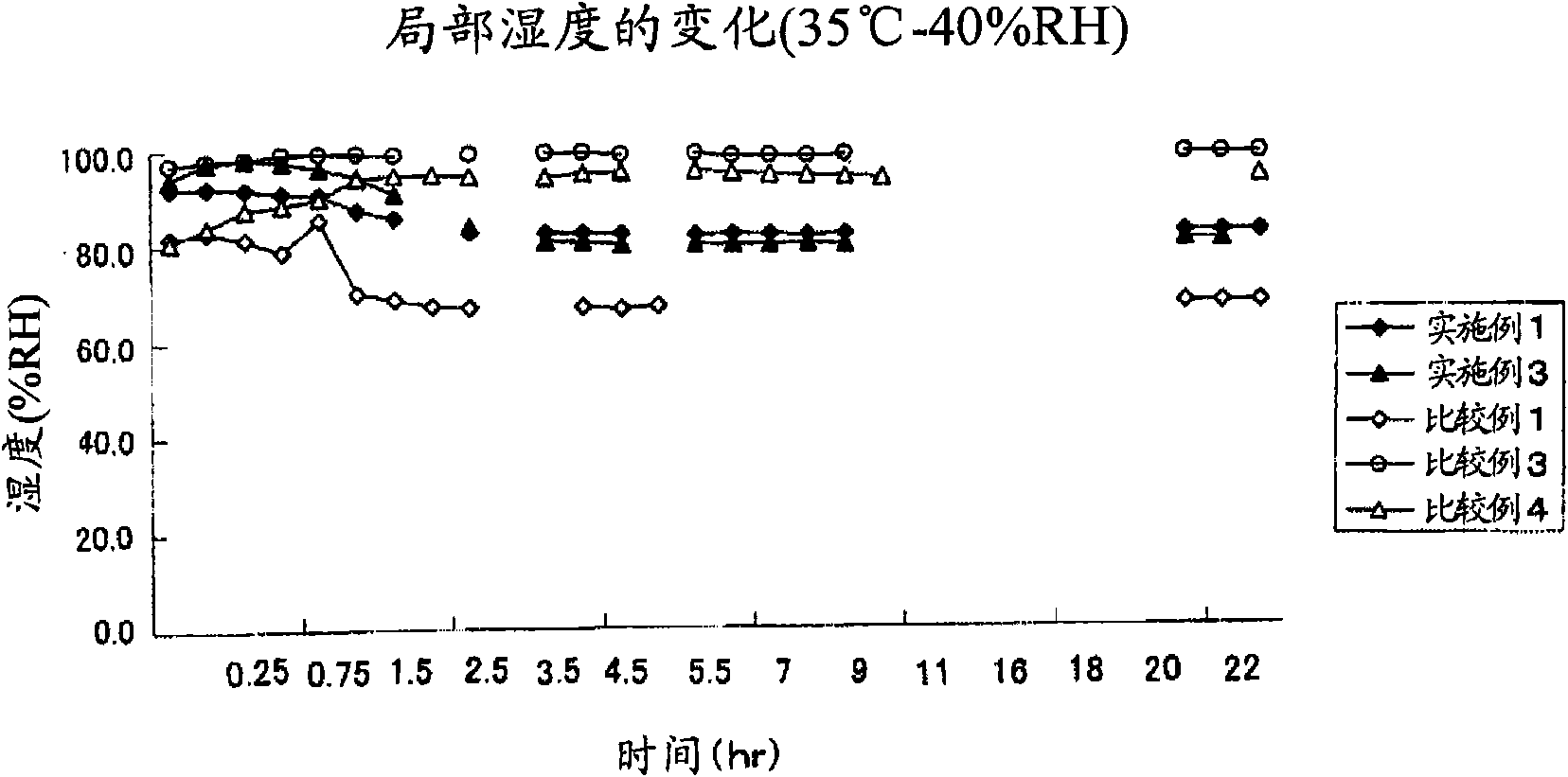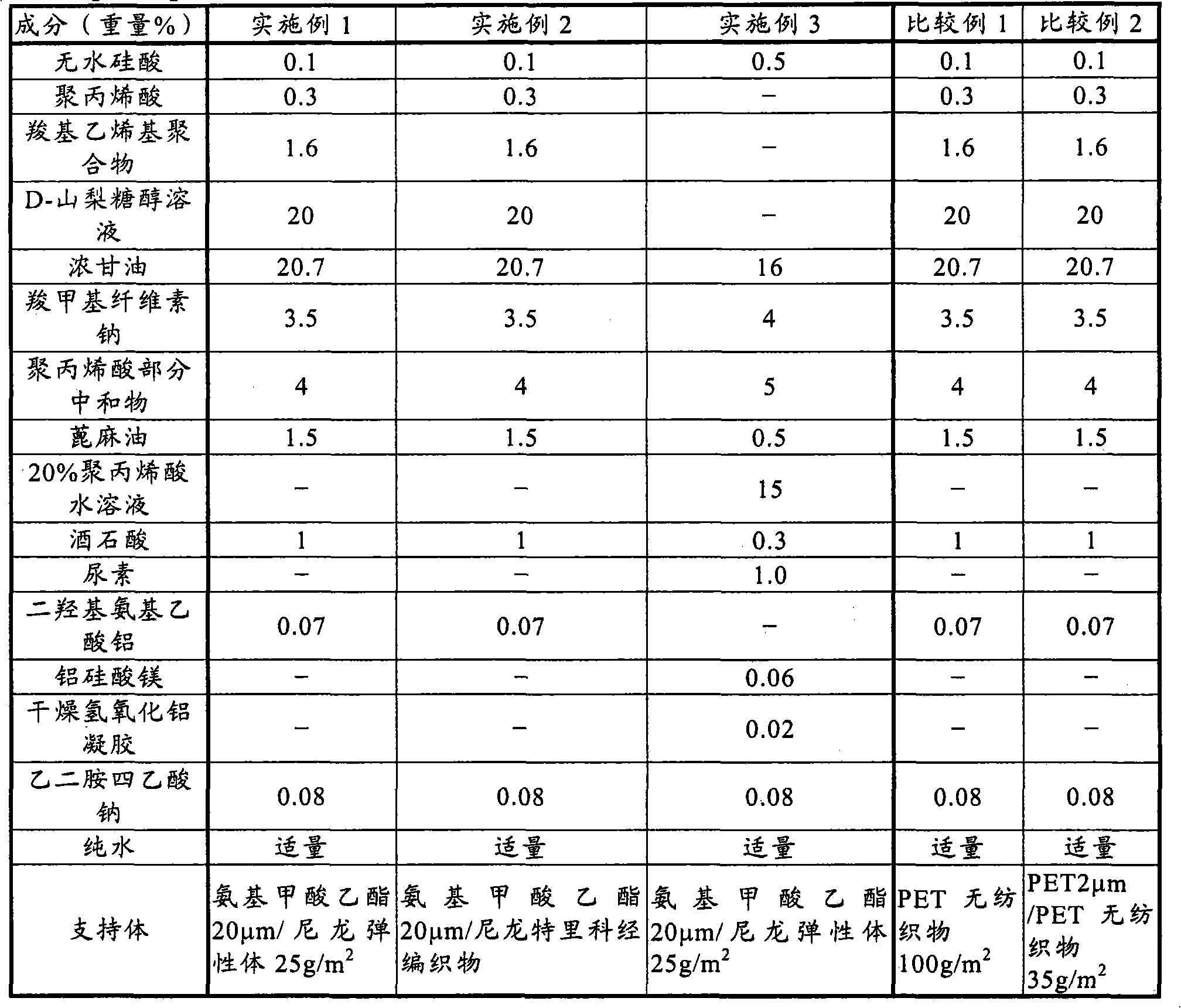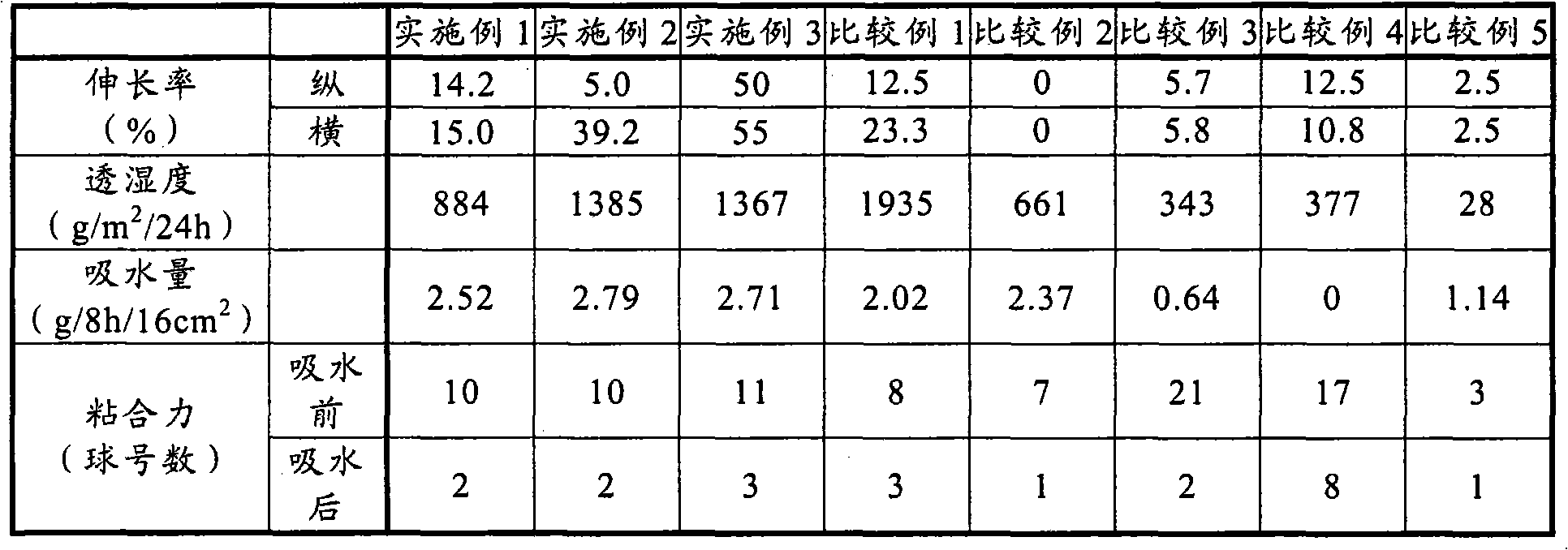Wound-covering hydrogel material
A coating material, hydrogel technology, used in medical science, bandages, absorbent pads, etc., can solve problems such as insufficient adhesion, and achieve the effect of preventing skin irritation, preventing wet environment, and protecting excellent
- Summary
- Abstract
- Description
- Claims
- Application Information
AI Technical Summary
Problems solved by technology
Method used
Image
Examples
Embodiment 1
[0047] Dissolve carboxyvinyl polymer in an appropriate amount of pure water (1.6g), then add D-sorbitol solution (20g), and mix well. Then with polyacrylic acid (0.3g), tartaric acid (1.2g), concentrated glycerin (20.7g), sodium carboxymethylcellulose (3.5g), polyacrylic acid partially neutralized (4g), anhydrous silicic acid (0.1g ), castor oil (1.5g), aluminum dihydroxyglycinate (0.07g), sodium edetate (0.08g) and pure water (appropriate amount) were uniformly mixed to prepare a hydrogel. The hydrogel was stretched on urethane (20 μm) / nylon elastomer (25 g / m 2 ), the surface of the gel was covered with a polyester film, thereby producing a hydrogel wound dressing material.
Embodiment 2
[0049] Using the ingredients of Example 2 described in Table 1, a hydrogel was prepared in the same manner as in Example 1, stretched on urethane (20 μm) / nylon tricot fabric (support), and coated with polyester The membrane coats the gel surface, thereby producing a hydrogel wound dressing material.
Embodiment 3
[0051] Dissolve anhydrous silicic acid (0.5g) in an appropriate amount of pure water, then add urea (1.0g), sodium edetate (0.08g), and castor oil (0.5g), and mix well. Then 20% polyacrylic acid aqueous solution (15.0g), tartaric acid (0.3g), concentrated glycerin (16.0g), sodium carboxymethylcellulose (4.0g), polyacrylic acid partially neutralized (5.0g), aluminosilicate Magnesium aluminum metasilicate (0.06 g), dry aluminum hydroxide gel (0.02 g) and an appropriate amount of pure water were uniformly mixed to prepare a hydrogel. The hydrogel was stretched on urethane (20 μm) / nylon elastomer (25 g / m 2 ), the surface of the gel was covered with a polyester film, thereby producing a hydrogel wound dressing material.
PUM
 Login to View More
Login to View More Abstract
Description
Claims
Application Information
 Login to View More
Login to View More - R&D
- Intellectual Property
- Life Sciences
- Materials
- Tech Scout
- Unparalleled Data Quality
- Higher Quality Content
- 60% Fewer Hallucinations
Browse by: Latest US Patents, China's latest patents, Technical Efficacy Thesaurus, Application Domain, Technology Topic, Popular Technical Reports.
© 2025 PatSnap. All rights reserved.Legal|Privacy policy|Modern Slavery Act Transparency Statement|Sitemap|About US| Contact US: help@patsnap.com



